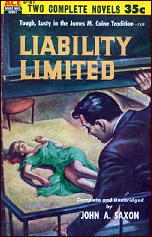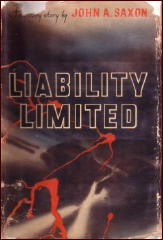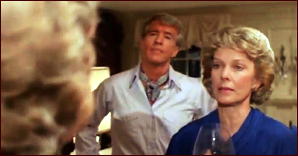
ERLE STANLEY GARDNER – The Case of the Sulky Girl. William Morrow, hardcover, 1933. Pocket #90, paperback, 1941. Reprinted by Pocket many times. Ballantine, paperback, February 1992. TV episode: Perry Mason, 19 October 1957 (Season 1, Episode 5).
This is the second of the Perry Mason novels, the first being The Case of the Velvet Claws, and one of the first I read soon after I was allowed into the grown-up section of the local library, right behind the main desk, when (I’m guesstimating) I was all of either 12 or 13.
Do I remember it? No, not at all. I’ve read too many Mason novels over the years, all written to pretty much the same formula, and who could keep them all straight, even they wanted to? Even the episodes of the long-running TV series were scripted to clockwork. At 8:05 on the dot the courtroom proceedings were adjourned so Perry and crew could go out and get more evidence, after the break for commercials.

The girl is not so much sulky in this early novel, as she is hot-tempered, which makes her difficult for Mason to handle when she’s first suspected of killing her uncle, then as she becomes the defendant in the courtroom battle that follows. It seems that according to her father’s will, she doesn’t get the money in his estate until she is 25, and if she marries before then, she may not get any at all, depending on what her uncle decides.
She doesn’t tell Mason everything, of course — do any of his clients? There is a lot of money,, at stake, there’s no getting around it, and a lot of people want to get their hands on some of it, and they don’t care how they do it.
I have read online that Sulky Girl was the first of Mason novels in which most of the second half of the book takes place in a courtroom. Whether this is so or not, the trial in this one is a good one. It had me flipping pages as fast as I could read them. It is no wonder that the Mason novels became so popular so quickly.

Other than clothing and automobiles of the era, there is little to suggest how old this book is. Mason is described as talking in disinterested monotones quite often, with little facial expression. Della Street has only a small role, and Paul Drake even less. You will note that I am not even telling you who these characters are. If you are reading this blog, I am sure I am safe in assuming that you already know.
The plot is good one, even if a bit unfair to would-be detectives at home, I thought. Mason doesn’t mess around with the physical evidence very much, as was his habit later on, but he certainly makes a spectacle of the courtroom drama. This one was a lot of fun to read.


